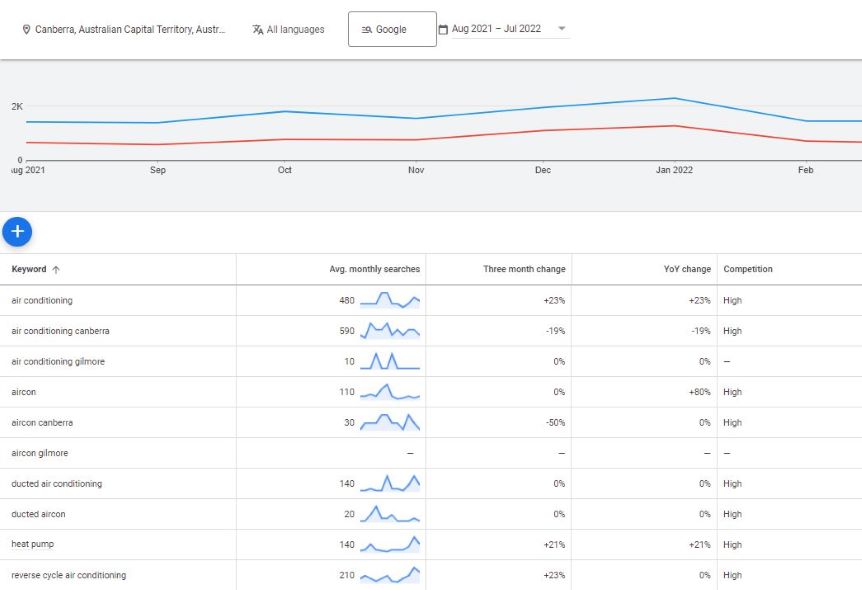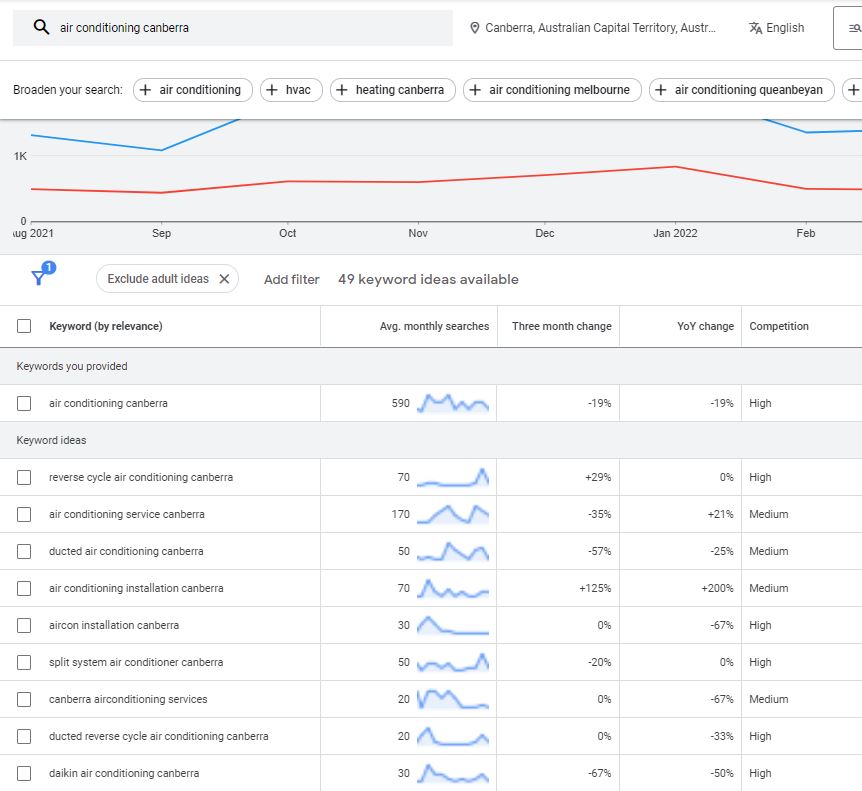When it comes to driving traffic to your website, there is no more important factor than choosing the right keywords. The right keywords can make all the difference in getting your website seen by potential customers, and ultimately, generating sales. But with so many options out there, how do you choose the right keywords for your business? Here are a few tips:
1. Start with your customers
The best place to start when choosing keywords for your business is with your customers. What terms do they use when searching for businesses like yours? What are their pain points and needs? What are they looking for when they come to your website or blog?
For example, what terms do your customers use when they are searching for home air conditioning? In New Zealand, we use the term heat pump for residential and air conditioning for commercial. In Australia they talk about air conditioning, split systems, reverse cycle, and so on. Its all the same thing, but it pays to be specific.
You can learn a lot about the keywords your customers are using by doing some market research. This can include things like surveys, interviews, and focus groups. You can also use tools like Google AdWords Keyword Planner and Google Trends to see what keywords are being used most frequently in searches related to your business.
2. Make a list of relevant keywords
Once you have a good understanding of the keywords your customers are using, it’s time to start making a list of relevant keywords for your business. In general, you should aim to create a list of around 10-15 keywords that are relevant to your business, product, or service.
When choosing keywords, it’s important to strike a balance between being too general and too specific. For example, a keyword like “dog food” is too general, as it will be difficult to rank for this term given the high level of competition. In this case, choose a long-tail keyword instead.
Long–tail keywords are simply longer, more specific keywords that are less competitive and more likely to result in conversions. For example, rather than just targeting the keyword “shoes“, a long–tail keyword could be “women‘s running shoes“.
3. Think about intent
Think about why people are searching for your business? Is it to purchase something? Or are they looking for expert information?
Here’s a helpful tip. When people are searching for “air conditioning”, they may be doing research. But when people search for “air conditioning canberra“, they are most likely looking for someone in Canberra to install an air conditioning system for them. Adding a location increases the chance of buying intent.
4. Use keyword research tools
Once you have a list of relevant keywords, it’s a good idea to use some keyword research tools to help you refine and prioritize your list. There are a number of different keyword research tools available, but some of the most popular include Google AdWords Keyword Planner, Google Trends, and Moz Keyword Explorer.
These tools can help you to see things like search volume, competition level, and suggested bid price for each keyword on your list. This information can be helpful in determining which keywords are worth targeting and which ones you should leave off your list.
5. Prioritize your target keywords
After you’ve used keyword research tools to refine your list of keywords, it’s time to start prioritizing which ones you want to target first. In general, you should start by targeting the keywords that are most relevant to your business and have the highest search volume.
Its a good idea to measure traffic volume for a variety of words, to ensure you know what most people use in the location you wish to service.
Using the air conditionig example above, we could measure the following words:
- air conditioning
- air conditioning canberra
- air conditioning gilmore
- aircon
- aircon canberra
- aircon gilmore
- ducted air conditioning
- ducted aircon
- heat pump
- heat pumps
- reverse cycle air conditioning
- split systems
You can see that we are checking variations on the same theme. Do people use air conditioning or aircon? Is there sufficient traffic in Gilmore, or are we better to expand to Canberra overall?

Google Keyword planner shows us that air conditioning is used far more than aircon, so we can prioritise that keyword. We can also see that there is negligible search volume for Gilmore, so we should focus on Canberra.
There is high competition for air conditioning Canberra though, so we would be wise to add long-tail keywords as well. By using Google’s “Discover new keywords” tool we can use air conditioning canberra to generate long-tail keywords that have lower competition but sufficient search volume.

The results show us that “air conditioning installation canberra” only hs medium competition but 70 searches per month – more than 2 per day. This is worth testing.
6. Test and track.
Once you’ve chosen your keywords, it’s important to test and track your progress. Use Google Analytics to track your traffic and see how your keywords are performing. This will help you fine-tune your keyword strategy and ensure that you’re getting the most out of your campaign.
